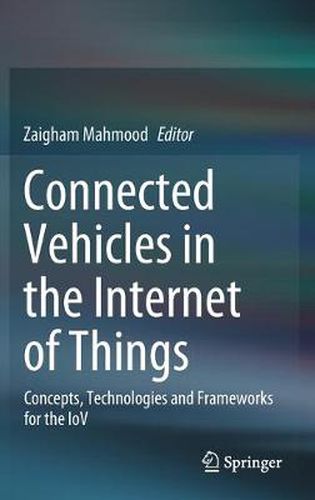Readings Newsletter
Become a Readings Member to make your shopping experience even easier.
Sign in or sign up for free!
You’re not far away from qualifying for FREE standard shipping within Australia
You’ve qualified for FREE standard shipping within Australia
The cart is loading…






This title is printed to order. This book may have been self-published. If so, we cannot guarantee the quality of the content. In the main most books will have gone through the editing process however some may not. We therefore suggest that you be aware of this before ordering this book. If in doubt check either the author or publisher’s details as we are unable to accept any returns unless they are faulty. Please contact us if you have any questions.
This book presents an overview of the latest smart transportation systems, IoV connectivity frameworks, issues of security and safety in VANETs, future developments in the IoV, technical solutions to address key challenges, and other related topics.
A connected vehicle is a vehicle equipped with Internet access and wireless LAN, which allows the sharing of data through various devices, inside as well as outside the vehicle. The ad-hoc network of such vehicles, often referred to as VANET or the Internet of vehicles (IoV), is an application of IoT technology, and may be regarded as an integration of three types of networks: inter-vehicle, intra-vehicle, and vehicular mobile networks. VANET involves several varieties of vehicle connectivity mechanisms, including vehicle-to-infrastructure (V2I), vehicle-to-vehicle (V2V), vehicle-to-cloud (V2C), and vehicle-to-everything (V2X). According to one survey, it is expected that there will be approximately 380 million connected cars on the roads by 2020. IoV is an important aspect of the new vision for smart transportation.
The book is divided into three parts: examining the evolution of IoV (basic concepts, principles, technologies, and architectures), connectivity of vehicles in the IoT (protocols, frameworks, and methodologies), connected vehicle environments and advanced topics in VANETs (security and safety issues, autonomous operations, machine learning, sensor technology, and AI).
By providing scientific contributions and workable suggestions from researchers and practitioners in the areas of IoT, IoV, and security, this valuable reference aims to extend the body of existing knowledge.
$9.00 standard shipping within Australia
FREE standard shipping within Australia for orders over $100.00
Express & International shipping calculated at checkout
This title is printed to order. This book may have been self-published. If so, we cannot guarantee the quality of the content. In the main most books will have gone through the editing process however some may not. We therefore suggest that you be aware of this before ordering this book. If in doubt check either the author or publisher’s details as we are unable to accept any returns unless they are faulty. Please contact us if you have any questions.
This book presents an overview of the latest smart transportation systems, IoV connectivity frameworks, issues of security and safety in VANETs, future developments in the IoV, technical solutions to address key challenges, and other related topics.
A connected vehicle is a vehicle equipped with Internet access and wireless LAN, which allows the sharing of data through various devices, inside as well as outside the vehicle. The ad-hoc network of such vehicles, often referred to as VANET or the Internet of vehicles (IoV), is an application of IoT technology, and may be regarded as an integration of three types of networks: inter-vehicle, intra-vehicle, and vehicular mobile networks. VANET involves several varieties of vehicle connectivity mechanisms, including vehicle-to-infrastructure (V2I), vehicle-to-vehicle (V2V), vehicle-to-cloud (V2C), and vehicle-to-everything (V2X). According to one survey, it is expected that there will be approximately 380 million connected cars on the roads by 2020. IoV is an important aspect of the new vision for smart transportation.
The book is divided into three parts: examining the evolution of IoV (basic concepts, principles, technologies, and architectures), connectivity of vehicles in the IoT (protocols, frameworks, and methodologies), connected vehicle environments and advanced topics in VANETs (security and safety issues, autonomous operations, machine learning, sensor technology, and AI).
By providing scientific contributions and workable suggestions from researchers and practitioners in the areas of IoT, IoV, and security, this valuable reference aims to extend the body of existing knowledge.